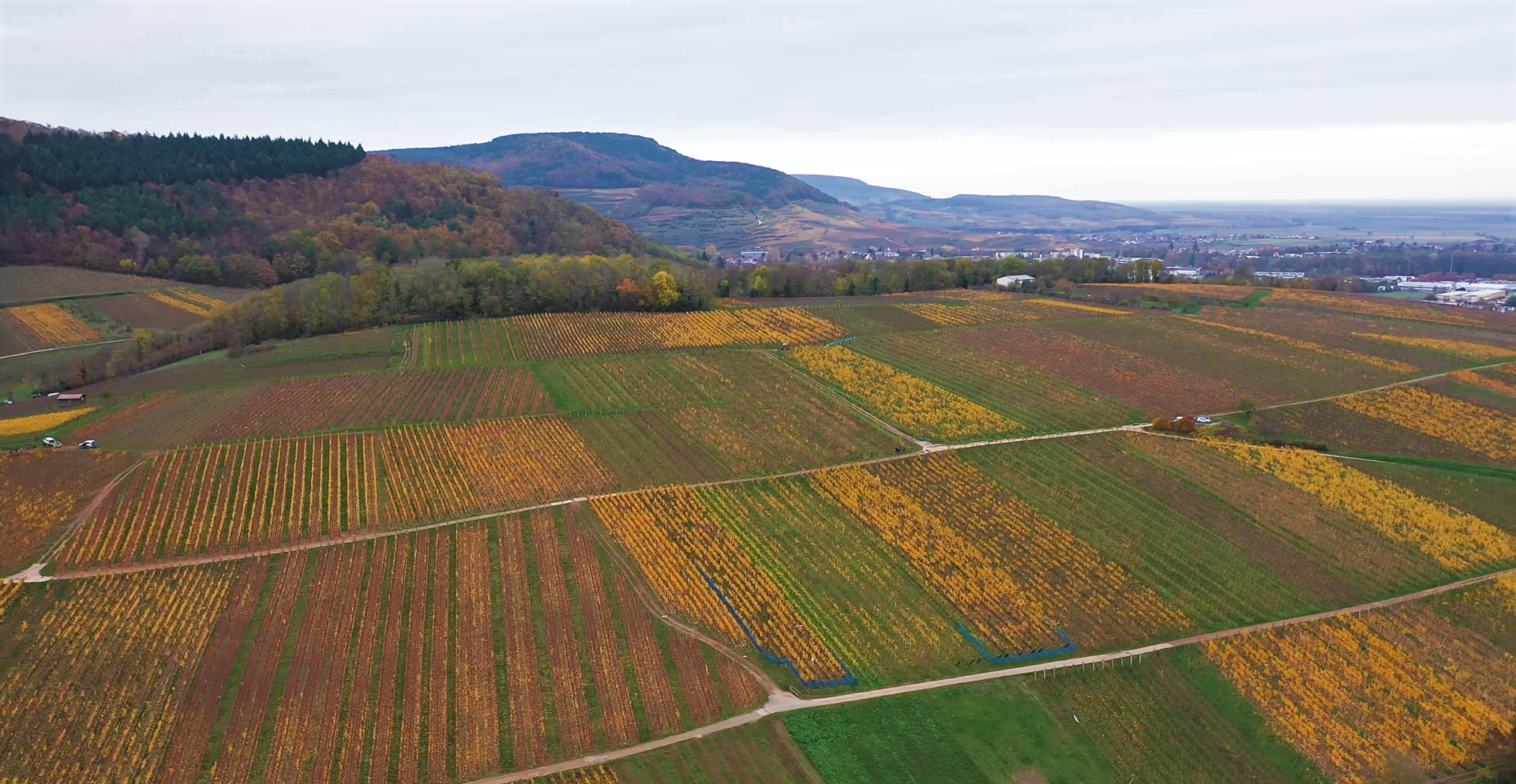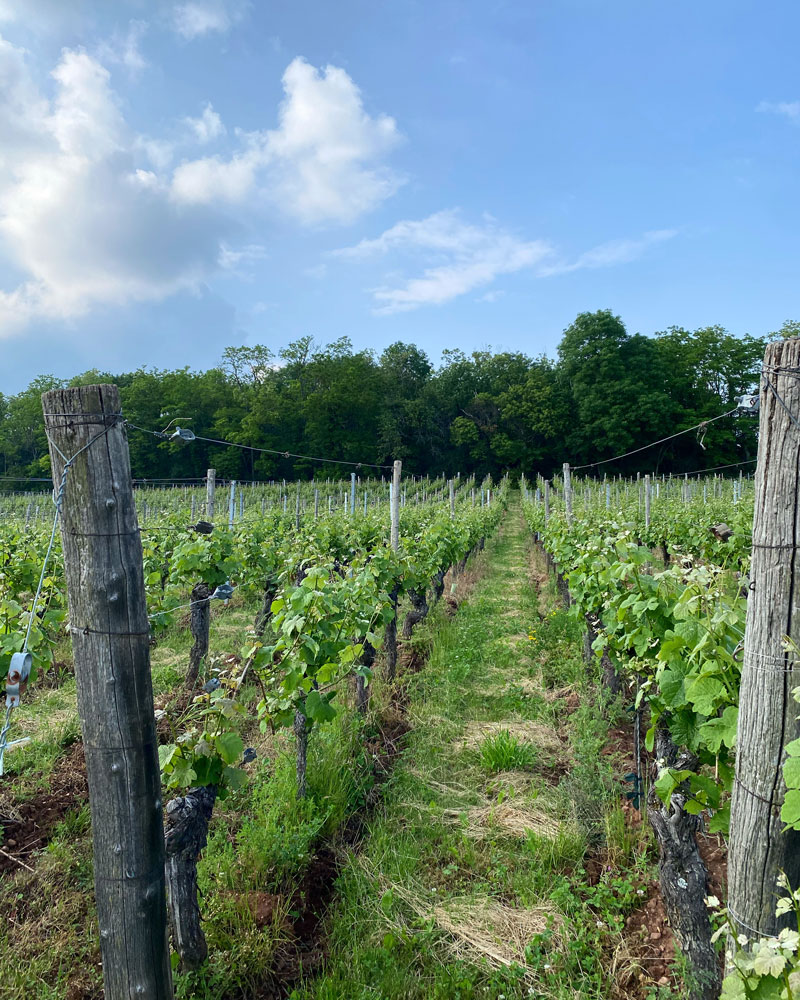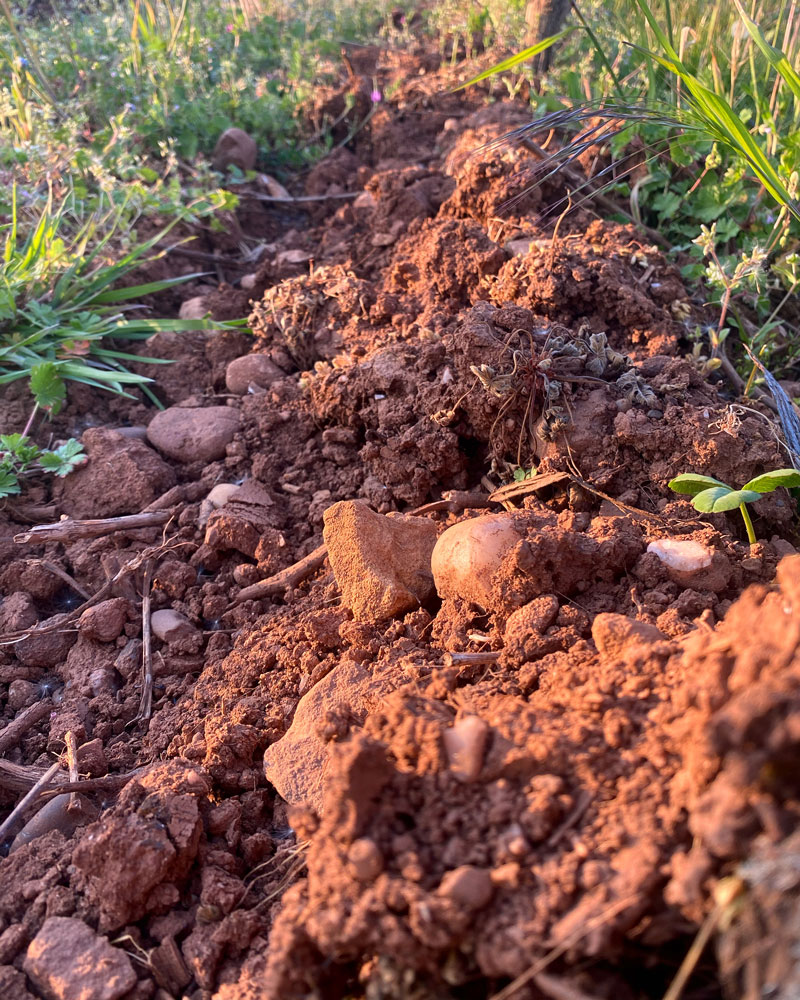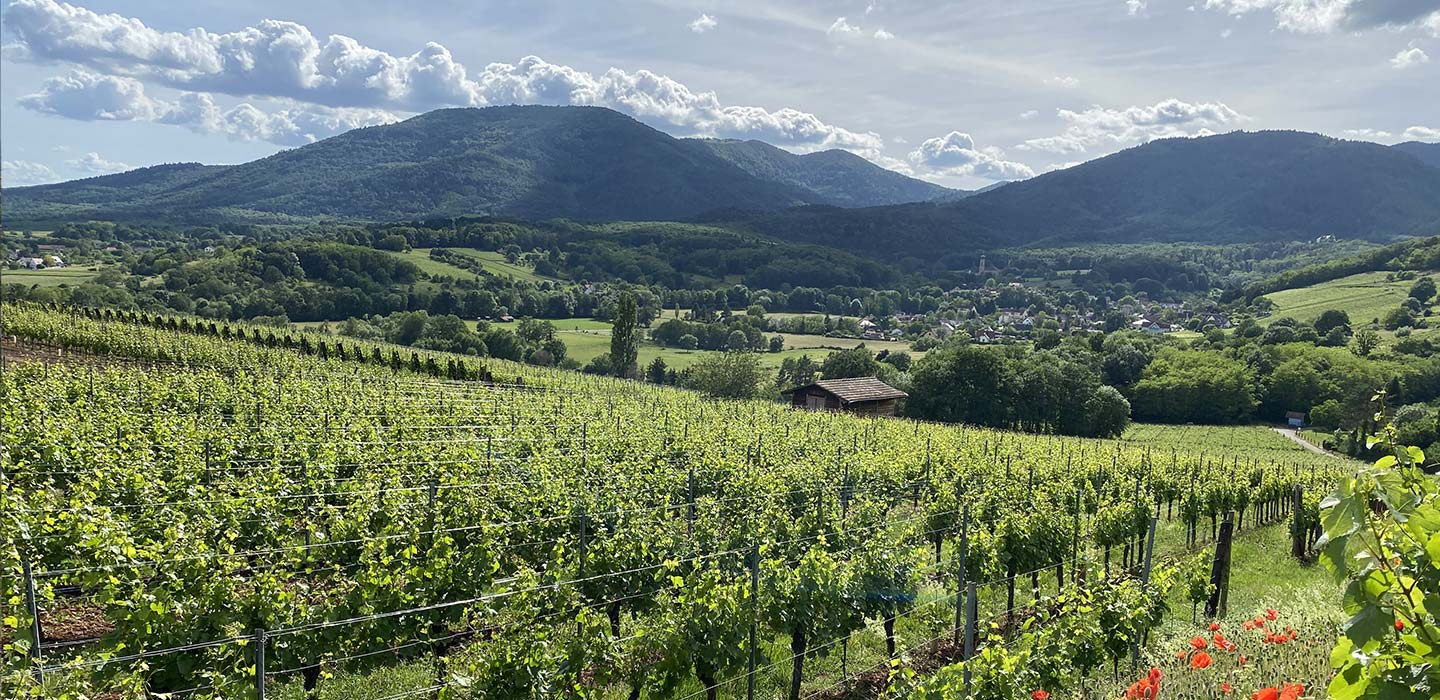A veritable geological puzzle, Alsace is a region rich in terroir diversity.
One estate, many terroirs
The wines come exclusively from our parcels located on the Soultz communal bench. Situated at the foot of the highest peak in the Vosges mountains, the vineyard enjoys an ideal location. The mountainous relief provides a special microclimate. It protects us from the Atlantic storms and sows a warm wind (Foehn). In summer, the semi-continental climate creates dry conditions, forcing the vines to seek water as close as possible to the underlying rock. The very expression of terroir !
Different landforms and soil types make up the diversity of Soultz terroirs.
As the tasting progresses, each particularity is revealed, and the soul of the wine is fully expressed.

MITTELBOURG
On the surface, the soil is an orange-brown color. Approaching 30 to 50 cm in depth, this silt-clay-sand stratum is both fertile and stony. It is underlain by Oligocene clay conglomerates and numerous limestone pebbles.From time to time, pink sandstone boulders can be found in the surrounding hills.The underlying limestone is considered to be a veritable root system, and is an important mineral resource for the vines. It marks the wines with a saline mineral framework, hence the name of the town of Soultz (historically "Soulza" and "Salz" meaning salt).
The richness of the sun and the strong ventilation of this cru make it a major asset in the production of wines of great richness. The wines are typical, marked by a exhilarating minerality. They combine finesse and power. The energy of this terroir is ideal for long shifts.



FINKENNEST…le nid des pinsons
Monopoly of the domain
Finkennest, "the finches' nest", rises above Mittelburg. Emerging from a forest of acacia and chestnut trees, this terroir enjoys the sound of birdsong all day long. Perhaps the origin of its name ?
The subsoil is composed of the same limestone as in Mittelboug. The soil, however, is much redder and thinner. Marked by iron, this blood-red is so distinctive and visible nowhere else on the hill. The depth of the soil is very shallow due to its proximity to the summit. Sometimes it's even difficult to drive a peg into it at 30 cm. Water reserves are critical in dry years. Young vines have difficulty establishing themselves here, but the old vines that our ancestors planted in the 50s and 60s have been able to develop their root systems in the rocky fissures to catch every drop of water intimately marked by the terroir. The grapes ripen slightly later, due to the altitude of around 400 meters. However, the southern exposure ensures optimal ripeness.
Autumn arrives, with rains dotting a more humid climate. The bowl-shaped slope creates considerable humidity, ideal for botrytis. For the past 30 years, there have been very few years in which the Gewurztraminers of this region have not produced Vendanges Tardives. Sélections de Grains Nobles are produced on this terroir in the best years.
A land of unique wines !


LIEBOURG
An integral part of the Mittelbourg hill, this particular terroir is marked by its westerly exposure. The grandeur of nature is right in front of us: countless trees line the Vosges mountains and in the distance we can see the Grand ballon which keeps an eye on everything. On our left, we can see Notre-Dame de Thierenbach, a major pilgrimage site.
The soil closely resembles that of Mittelburg. Composed of limestone over Oligocene conglomerates, the soil gives the wines their particular salinity. The westward slope gives this terroir a certain freshness. Maturation is late, cold and invigorating. The wines are tenaciouslytaut and lively.


3 Rue de la Chapelle, 68360 Soultz-Haut-Rhin
Schedule
Open Monday to Friday from 8 a.m. to 8 p.m.
Weekends by appointment



